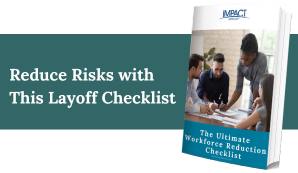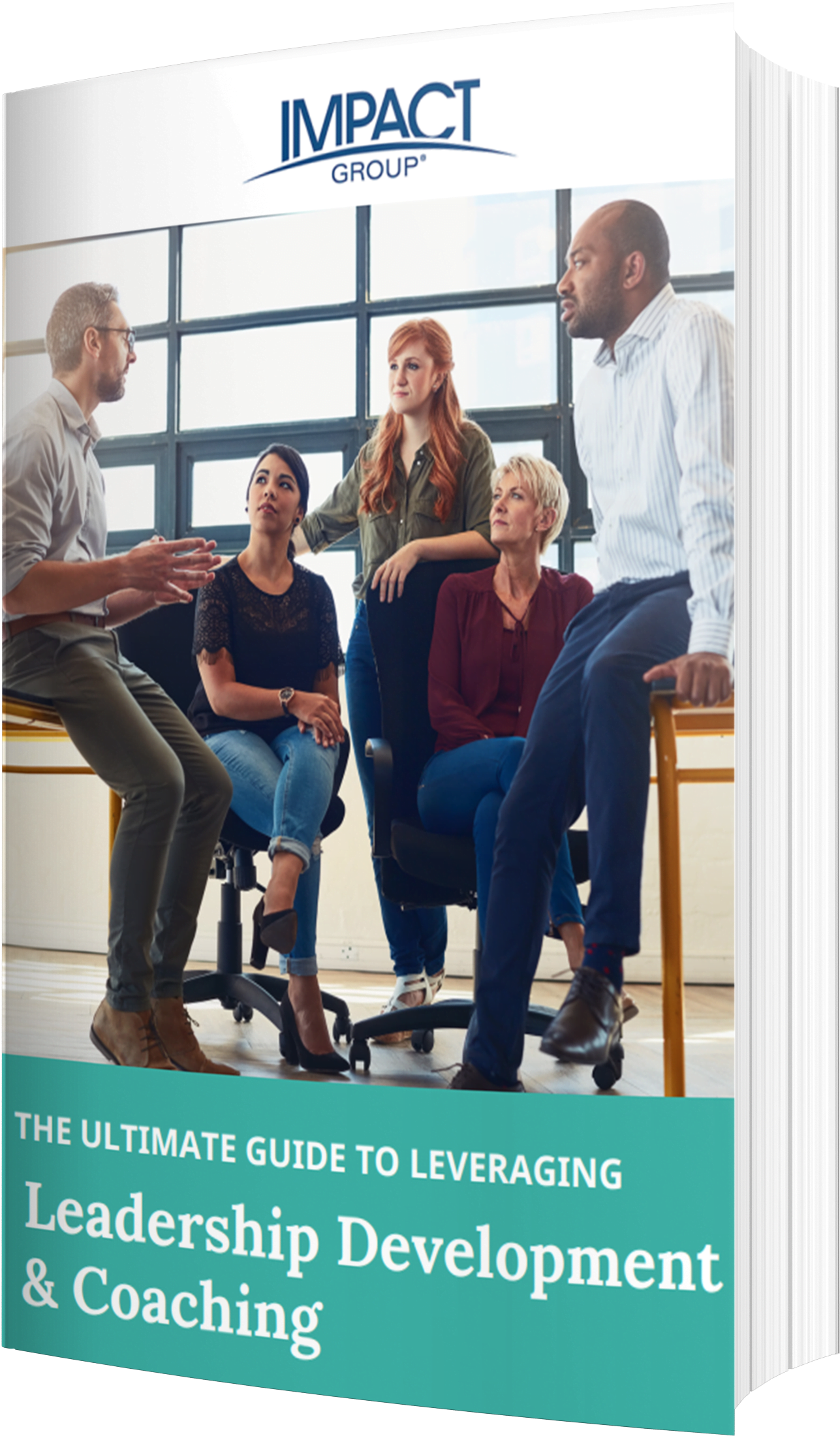Leadership assessment tools can provide broad insights into the work style dynamics that make individuals thrive in their careers. Here’s how our career coaches and certified experts view the benefits of these six leadership assessment tests: Birkman, DiSC, Myers-Briggs Type Indicator (MBTI), Strong Interest Inventory, Clifton Strengths, and Hogan.
Assessment Tool: Birkman
“Great for executive development & team building.”
This leadership assessment evaluates one’s preferences in four areas: Motivation, Self-Perception, Social Perception, and Mindset. “In my view, the Birkman Assessment reflects the workplace social psychology,” shares Kenneth Skoff, IMPACT Group career coach, who has administered the assessment to many professionals and executives.
In other words, this assessment provides insight into one’s style, motivational needs, and preferences, and it also sheds light on ways to understand others better. “Applying these insights can yield transformational results for leading others or working with peers,” says Marcia Mueller, vice president of global leadership for IMPACT Group.
In addition, this leadership assessment is ideal for identifying strengths, areas that need improvement, and how to align employees to roles that best suit them. Jennifer Stutzriem, IMPACT Group career coach, agrees: “It is a great tool to use for coaching or for mentor someone who wants to identify a career path aligned with their interests and strengths, either to become an expert at what they do or move into a leadership role.”
Research proves that these three factors have significant influence on job performance and job satisfaction:
- Characteristics of the individual
- Characteristics of the situation
- Interaction between the individual and the situation
The Birkman gives insight into these three areas so individuals can predict and understand themselves and their work style. “The Birkman,” shares Jennifer, “allows an individual to answer a series of questions that will help them understand their communication styles and preferences, their work styles, how they respond when things are going well, and how they respond when they are under stress.”
Kenneth recommends not viewing the results as an all-encompassing representation of the individual’s capabilities. Above all, it represents broad factors that highlight general categories from specific stress scenarios based on the individual’s public perceptions and personal preferences in workplace scenarios that affect motivation, self-perfection, social perception, and mindset.
“This is a robust assessment tool, which when debriefed by a certified coach, can be leveraged to improve leadership effectiveness, grow interpersonal understanding, highlight strengths to leverage, and identify areas for development or growth,” states Marcia.
Assessment Tool: DiSC
“Perfect for helping people understand their impact on one another.”
This tool determines people’s behavioral differences to improve work productivity, teamwork, leadership, sales, and communication. The letters stand for:
- D = Dominance
- i = Influence
- S = Steadiness
- C = Conscientiousness
IMPACT Group Career Coach Katherine Burik, who is certified in DiSC, shares, “This assessment is built on the premise that there are four major behavioral types. We all have some of each type in our work style, although one type might be dominant.” She points out that there is no “best” style. Rather, it’s a path of discovery that helps us learn more about other people while also better understanding ourselves.
After completing a series of questions, a person receives a clear understanding of their personality and behavior, in addition to how they can work with people of other styles. “I like to use DiSC to help people understand the impact they have on one another. It has been my experience that most workplace conflict can be traced to assumptions made about behavioral style,” Katherine states. “Therefore, I use DiSC training for conflict resolution, communications, understanding behavior, and preparing for promotion.”
In addition, the results from this leadership assessment present actionable steps. These steps can be leveraged to help people understand each other. Katherine prefers utilizing the information to help individuals determine the kind of work environment and culture they would feel most comfortable in. She shares, “This assessment is easy to use, based on a ton of research, and makes sense to people. Everyone I’ve trained in this assessment can see themselves somewhere in their results.” She believes it’s not an assessment for assessment sake. Years later, her former clients still remember and use the information to influence and build relationships with colleagues.
Assessment Tool: MBTI
“The greatest aspect of the MBTI is its versatility.”
The Myers-Briggs Type Indicator – shortened to MBTI – is a “self-report inventory designed to identify a person’s personality type, strengths, and preferences,” according to VeryWellMind. It’s the most widely used assessment across the globe.
Ever heard someone refer to herself as an INFJ or an ESTP? These are two of the 16 possible MBTI designations. The assessment asks a series of questions to determine where you fall in these four major categories:
- Introversion or Extraversion (I or E)
- Sensing or Intuition (S or N)
- Thinking or Feeling (T or F)
- Judging or Perceiving (J or P)
Two options across four categories yields 16 possible personality types the assessment identifies. One is not better than the other. Rather, they reveal more about yourself and how you respond, interact, and perceive the world. “The MBTI is a well-established work style assessment with thorough scientific data to validate it. This is always good for detail-oriented individuals compared to recent popular assessments that have less substance in them,” says Cynthia Bucy, IMPACT Group career coach. “Some assessment nomenclature has a lot of judgement attached to it. However, the MBTI has less of that judgement tied to it.”
Digging into Preferred Career Paths with Leadership Assessment Tools.
Cynthia enjoys using the assessment with individuals who are open to new career paths. “The formal assessment generates top job titles and industries, as well as least preferred titles and industries, based on the individual’s results.” She uses that to really dig into various career opportunities with the individual, while guiding them on ways to thoroughly research the career path and long-term career outlook using tools like O*Net Online.
“This leadership assessment is great in assisting individuals with gaining a greater self-awareness, thereby self-actualizing their true ‘preferred’ self,” says IMPACT Group Coach Mariam Tarantella. She is certified in MBTI and has coached people during career transitions at IMPACT Group since 2015.
For individuals, Mariam believes the assessment brings greater understanding of:
- Their professional and personal needs.
- How they prefer to engage with others and their work.
- The aspects of their professional setting that are most crucial for job satisfaction and career growth.
Organizations benefit as well. “It assists in best understanding employee work styles and preferences to create the most productive environments and teams, ultimately leading to high workplace morale and comradery.”
Mariam feels this leadership assessment can be used for many goals and life stages, beyond career and workplace. She shares, “Once people identify and truly understand their preferences, they can then bring that knowledge to enhance their work, relationships, interests, community, and personal characteristics.”
Assessment Tool: Strong Interest Inventory
“Guides a person to evaluate what career or careers are best for him.”
Next up – the Strong Interest Inventory assessment. This work style assessment focuses on career and leisure interests in six categories:
- Realistic
- Artistic
- Investigative
- Social
- Enterprising
- Conventional
“Just as the name suggests, the Strong Interest Inventory provides an opportunity to identify a person’s interests,” shares Kevin Kiley, an IMPACT Group career coach who works closely with individuals who are undergoing a career transition due to relocation or job loss. “Awareness of those interests can be helpful as a person evaluates what career or careers they may pursue.”
After completing a series of questions relevant to those six quadrants, the Strong Interest Inventory breaks responses into 30 specific areas of interest that relate to study, careers, and leisure activities. Another take on the information reveals the individual’s personal style preference in five areas: work style, learning environment, team orientation, leadership style, and risk-taking.
“The work style assessment’s underlying principle is that the more our work aligns with our interests, the more likely we are to have a happy, satisfying career,” Kevin points out. The assessment can increase self-awareness along two potentially beneficial tracks. “First, it may reinforce an existing sense within the individual of what their interests are.” This can lead to increased confidence in their career choice. “And secondly, the assessment may also highlight some interests that they simply weren’t aware of.” With this new awareness, some individuals start considering new career paths. Kevin points out that in a down economy with few jobs available, knowing about other career options that are a good fit for an individual is especially important.
Bonus Assessment Tool: CliftonStrengths
Formerly known as StrengthFinders, this work style assessment analyzes your normal personality style from the perspective of Positive Psychology. CliftonStrengths presents 177 items to you that consist of a pair of potential self-descriptors. These descriptors are placed on polar ends of a continuum.
In addition, this assessment measures your talents – your natural patterns of thinking, feeling, and behaving. Then, they are categorized into 34 CliftonStrengths themes. The person’s top five strengths are determined, and ideally, these will be used to position the person in a way that they can cultivate their talents into strengths in the workplace, according to Talent Insights.
Bonus Assessment Tool: Hogan
Another popular personality and work style assessment is the Hogan Personality Inventory. This tool measures your day-to-day personality, also known as the bright side. It also assesses how you relate to others. At the heart of the leadership assessment is a drive to understand:
- What You Do
- How You Do It
- Why You Do It
Furthermore, broad insights generated from this assessment include analyzing leadership strengths and weaknesses, identifying employees with high potential, discovering a person’s motivating factors, and predicting how a person will act in a professional environment. This assessment is popular a pre-hire tool.5
Invest in Team Development & Leadership Assessment to Reduce Performance Gaps
These assessments can be used to gather meaningful data to help identify and develop talent. As a result, they better manage the business. Organizations attempting to make organizational changes, grow, and manage conflict without such assessment data are severely disadvantaged. At the same time, the data alone, without experts to interpret the results, can lead to poor decision making.
And once you’ve assessed your talents’ strengths, the next obvious step is further development. Organizations should be developing talent with high potential and especially those employees who are most critical to driving change and improvement in your business.
The combination of leadership assessment and dynamic virtual workshops are the winning combo to achieving results. With virtual workshops you can reduce team performance gaps, conflict, and loss of productivity. Rather than remedial, the emphasis is on creating greater self-awareness and leveraging positive traits. When organizations focus on strengths, employees have a 73% chance of being engaged at work. Virtual development programs improve and accelerate team collaboration, engagement, performance, and trust – especially while teams are working remotely.










